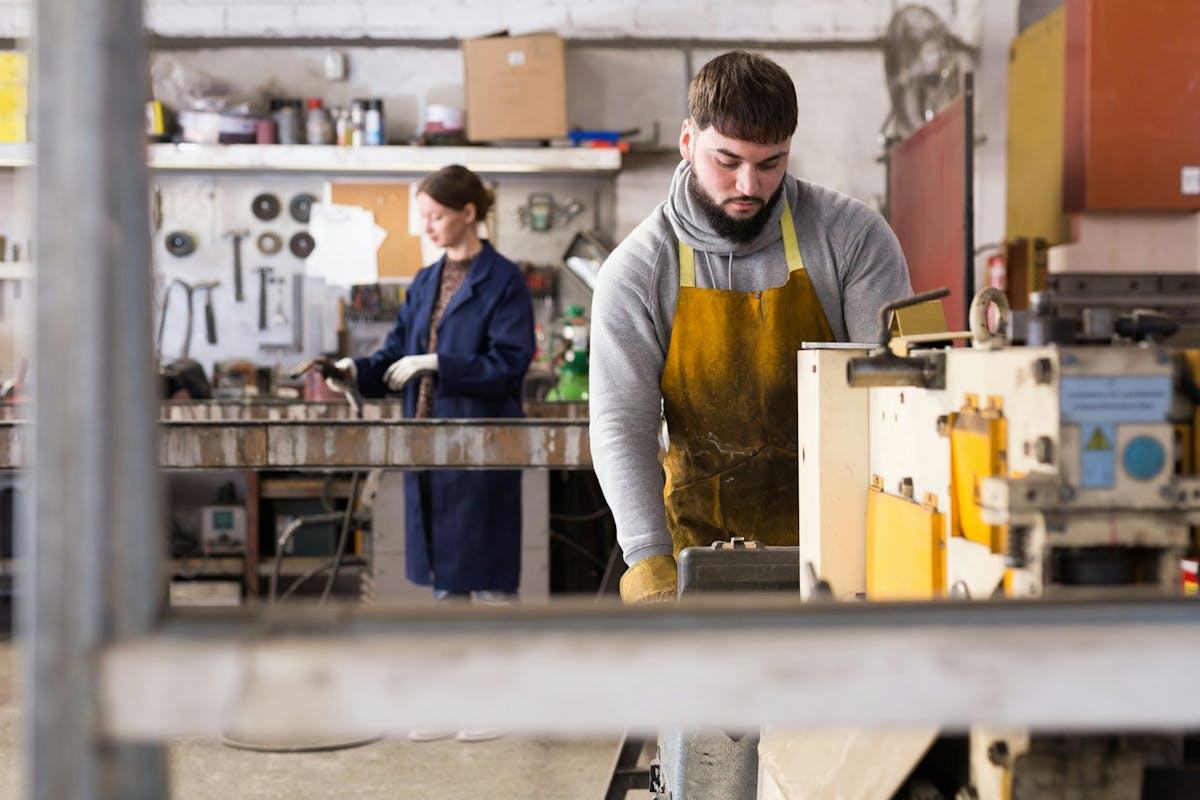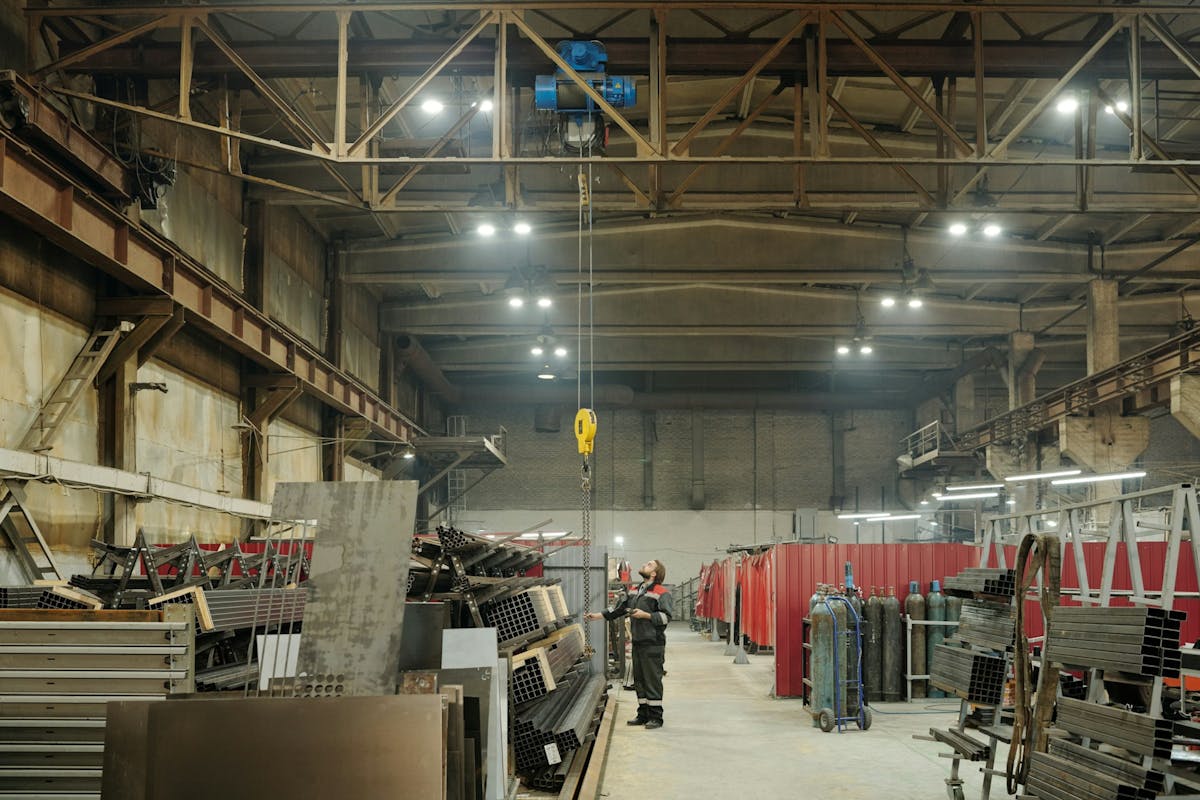A Comprehensive Guide for Construction Site Photo Documentation in 2025


Construction projects involve countless moving parts; teams, tools, timelines, and trades all working in tandem. In this high-stakes environment, even small miscommunications can ripple into major setbacks. That’s why documentation isn’t just helpful; it’s critical.
Photo documentation, in particular, offers something written reports can’t: an objective, time-stamped visual record of what really happened on-site. It improves communication, reduces disputes, and ensures accountability across every phase of a build. Whether you're tracking progress, verifying safety compliance, or simply aligning stakeholders, photos provide irrefutable context.
Done right, construction site photo documentation becomes one of your most powerful tools. This guide will walk you through the best practices, formats, and tools to do it well in 2025.
The Role of Construction Site Photo Documentation
Construction site photo documentation plays a vital role in managing modern projects. Beyond capturing snapshots, it creates a reliable visual record that supports nearly every aspect of construction from daily coordination to legal protection.
Transparency and Communication
Photos offer an objective form of evidence that minimizes confusion during daily communications. While written reports can be vague or open to interpretation, images clearly show what happened, when, and where. This clarity keeps crews, supervisors, and stakeholders aligned, especially when discussing technical details that are easier to show than explain.
For teams working across languages and cultural backgrounds, construction site photo documentation also breaks down communication barriers. A single image can speak volumes, making it easier for non-native speakers to grasp project status or understand on-site issues. This shared visual language becomes especially valuable when coordinating with subcontractors, vendors, and remote team members.
In distributed or hybrid project environments, photos allow off-site personnel to understand exactly what’s happening on location. Whether it's a remote project manager reviewing daily progress or an engineer assessing field conditions from another office, photo documentation bridges the physical gap and fosters faster, more informed decision-making.
Compliance and Safety
Capturing regular site photos ensures there’s a consistent and verifiable trail for compliance purposes. These images can confirm that safety protocols are being followed, that work matches approved designs, and that contractors are staying within code.
When it comes time for audits or inspections, photo archives offer proof of adherence to regulations. They document the condition of installations, demonstrate that appropriate PPE was worn, and show that the jobsite met required standards at each phase. In the event of a claim or dispute, these visual records provide critical evidence that can resolve issues quickly and fairly.
Project Tracking and Progress Monitoring
Regular construction site photo documentation allows teams to monitor progress in real time. By consistently capturing site activity, you build a visual timeline that makes it easy to identify which stages are complete, which are underway, and which may be falling behind.
Project managers use these visual records to validate work against the schedule, compare actual progress with expected timelines, and communicate updates to clients and stakeholders. For billing purposes, photos can also provide the documentation needed to support payment applications or justify change orders.
In fast-paced construction environments, having a clear and chronological photo trail helps avoid miscommunication and keeps the entire team accountable to the plan.
Risk Mitigation
One of the most valuable benefits of photo documentation is its ability to catch issues early. Photos can reveal inconsistencies in materials, poor workmanship, or deviations from design before those problems become hidden behind drywall or concrete.
In one real case, a project manager reviewing site photos spotted wall construction deviations of up to 31 inches. Identifying the issue early prevented a significant structural problem and avoided the legal fallout that might have followed.
By helping teams identify and correct mistakes before they escalate, photo documentation reduces rework costs and limits the financial impact of quality failures. Well-documented projects also provide stronger legal footing in the event of claims, ensuring that companies are better protected from liability.
Essential Features of Effective Construction Site Photo Documentation Tools
Not all photo documentation systems are created equal. The most effective tools share a common set of features that make documentation consistent, verifiable, and easy to manage across complex construction environments.
Timestamping and Watermarks
Automatic time-stamping is one of the most essential features in any construction photo tool. It creates an irrefutable timeline that helps with compliance tracking, dispute resolution, and project accountability. Platforms like Yourco embed date and time details into every image, offering a clear record of when and where photos were taken.
In addition to timestamps, customizable watermarks can enhance photo integrity. By including company logos, project names, or even GPS coordinates, watermarks confirm authenticity and help track the exact context of each image. This is especially useful on large or multi-phase sites, where location-specific documentation matters.
Real-Time Sharing and Cloud Storage
Photo documentation is most valuable when it’s easy to access and organize. This centralized approach ensures that team members can retrieve images quickly whether during construction or years later during renovations, warranty claims, or inspections. It also reduces the risk of losing documentation due to device damage or data silos, making your photo archive a reliable source of truth.
Mobile Accessibility and On-Site Capture
The best documentation happens in real time, directly from the job site. Mobile-friendly solutions make this possible. With SMS-based tools, field teams can take photos and send them immediately without needing to log into complex apps or systems.
These tools are simple enough to be used by anyone, no matter their tech proficiency. Features like image markup allow users to draw, highlight, or annotate directly on photos, helping clarify issues and speed up resolution. When workers can capture and share photos in the moment, documentation becomes part of the workflow—not an afterthought.
For distributed teams, these capabilities help avoid delays and miscommunications. Stakeholders can see issues firsthand, respond quickly, and keep decisions moving forward with the visual context they need.
Integration with Project Management Tools
Photo documentation becomes exponentially more powerful when it's integrated with project management platforms. Linking images to specific tasks, phases, or punch list items brings visual clarity to written updates and allows for more streamlined, actionable communication.
By embedding photo documentation directly into the project workflow, teams can reduce back-and-forth, resolve issues faster, and eliminate gaps between what’s happening on-site and what’s being reported in the system. Integrations also support audit trails and help ensure that updates are properly tracked and archived.
Best Practices for Effective Construction Site Photo Documentation
Implementing effective construction site photo documentation requires several strategic approaches:
Routine Documentation
Take photos on a set schedule—daily, weekly, or at each site visit—to ensure consistent progress tracking. Document key project milestones:
- Preconstruction surveys
- Foundation work
- Structural framing
- MEP system installations
- Final punch lists
This systematic approach builds a visual timeline that proves invaluable for tracking progress, settling disputes, and maintaining accountability. Additionally, a well-documented project can serve as a valuable resource for the onboarding process in construction, helping new employees understand project history and procedures more effectively.
Detailing and Contextualizing Photos
Take both wide shots for context and close-ups for details to create a complete visual record:
- Capture wide shots showing overall site conditions and progress
- Document close-ups of critical details like welds, joints, and connections
- Photograph structural features and building systems before they're enclosed
- Include before, during, and after shots for critical tasks
These photos might become crucial for future maintenance or legal reasons, so thoroughness pays off.
Organizing Photo Data
Create a clear, hierarchical folder structure (e.g., "Project/Site/Date/Milestone") for easy retrieval. Use metadata tagging with date, time, location, description, trade, and responsible person for better searchability. Implement standard naming conventions for files and folders, and use construction management platforms that support media uploads and direct linking to plans.
Standard Formats and Examples for Construction Site Photo Documentation
Effective documentation requires standardized approaches to ensure consistency and usefulness across projects:
Daily Progress Documentation Format
Create a daily visual record that includes:
- Site overview shots from fixed vantage points (typically from each corner)
- Weather conditions documentation (can affect claims and delays)
- Active work zones with crews visible
- Equipment in use
- Materials delivered or installed
Example: A high-rise project manager establishes four fixed positions to photograph the site each morning at 8 AM. These consistent angles create a time-lapse effect when reviewed sequentially, making progress instantly visible to stakeholders.
Critical Installation Documentation Format
For installations that will be concealed:
- Before installation (prepared area)
- During installation (showing proper techniques)
- After installation (completed work before concealment)
- Close-ups of connections, welds, and fasteners
- Reference to relevant plans in the photo (hold plans in frame)
Example: A plumbing subcontractor documents all in-wall plumbing with photos showing pipe material, connections, pressure testing, and relation to framing before drywall installation. When a leak is suspected months later, these images prevent unnecessary wall demolition by showing exactly where pipes run.
Issue Documentation Format
When problems arise:
- Context shot showing location within project
- Multiple angles of the issue
- Measuring tools in frame to document scale/dimension
- Reference objects for scale if measuring tools unavailable
Example: A site supervisor documents water infiltration by capturing the affected area with a moisture meter visibly showing readings, then follows up with daily photos using the same framing to track drying progress, creating irrefutable evidence for insurance claims.
Quality Control Inspection Format
For formal QC procedures:
- Inspection checklist visibly posted in one reference shot
- Sequential photos following the inspection sequence
- Close-ups of pass/fail items with measuring tools when relevant
- Final summary shot showing inspection result documentation
Example: A quality manager creates a photobook for each concrete pour showing pre-pour inspections of formwork and rebar, testing of concrete upon delivery, placement techniques, and finished results. This documentation proves compliance with specifications when strength tests later show inconsistent results.
Using SMS Technology for Enhanced Construction Site Photo Documentation
Construction workers are always on the move. Their tasks unfold across sprawling job sites, often in tough environments where hands are full, gloves are on, and every minute counts. Stopping to log into an app, upload a photo, or complete a digital form simply doesn’t fit into the rhythm of the job.
That’s why SMS is such a natural fit for construction sites. Every worker already knows how to text. It doesn’t require an internet connection, a smartphone, or any special training. If someone can send a message, they can report an issue, share a photo, or provide proof of work—all in real time.
Yourco is built specifically for this reality. Unlike traditional platforms that assume workers are behind a desk, Yourco gives frontline teams the ability to capture and share time-stamped photo documentation by simply sending a text. No laptop, no email, no forgotten logins and no data plan required.
By removing friction from the process, Yourco transforms photo documentation from a delayed administrative task into something immediate and actionable. It’s a system built not just for documentation—but for protection, accountability, and speed in high-stakes environments.
Real-Time Photo Documentation That Protects People and Projects
Capturing issues in real time is one of the most effective ways to reduce risk on a construction site. Yet many teams still rely on outdated reporting methods—end-of-day paperwork, delayed uploads, or mobile apps that are too clunky to use on the fly.
Yourco removes these bottlenecks. With SMS-based photo reporting, workers can snap a picture and send it instantly via text message. That moment is automatically time-stamped, securely stored, and accessible when it matters most—whether for internal follow-up, insurance claims, or compliance documentation.
A site worker sees exposed wiring? They send a photo. A driver completes a delivery? They snap a proof-of-delivery image. These quick actions create a living, visual record of site activity that improves response times and decision-making.
But the value of instant documentation doesn’t stop at speed. It has real business impact. Companies using Yourco have avoided thousands of dollars in false damage claims and chargebacks by providing clear, time-stamped evidence of what actually happened in the field.
In construction, these photos help teams validate work, close out insurance claims faster, support compliance during inspections, and bring clarity to internal investigations. Instead of relying on memory or hearsay, leaders can point to hard visual proof—boosting confidence across the board and protecting both people and operations from costly misunderstandings.
With a comprehensive analytics dashboard, you can even analyse trends when it comes to safety and documentation, seeing which locations seem to have more issues, and thereby implement solutions.
Smarter, Integrated Communication
Yourco’s technology does more than just send texts and photos. It integrates with your existing HRIS or payroll platforms, allowing you to connect the right messages to the right people based on location, shift, role, or team. Want to send a site-specific alert only to warehouse workers in Karachi? Easy. Need to follow up with a specific foreman about a safety concern? Done in seconds. Plus, with AI-powered language translation, language barriers are no longer a blocker. Workers can send updates in their native language, and managers receive them translated — creating a smoother flow of communication across multilingual teams.
Promoting a Culture of Action and Accountability
When communication becomes simple and instant, people are more likely to act. Yourco’s photo messaging functionality doesn’t just document issues — it encourages workers to speak up, report early, and stay engaged. This builds a proactive safety culture, where reporting isn’t seen as a chore, but as an easy part of the job.
And with two-way messaging, HR and safety leads can ask for more details or provide support right away, creating a loop of accountability that traditional systems simply can’t match.
In short? Yourco turns photo documentation from a reactive chore into a proactive safety and communication strategy.
Capture Success with the Right Tools
Construction doesn’t slow down—and neither should your documentation. As job sites become more complex and timelines more demanding, having the right system in place is a strategic advantage.
Yourco for construction equips your team to document what matters, when it matters, without adding friction to the day. From instant SMS photo capture to smart integrations and language translation, it meets your workforce where they are and gives them tools that fit the way they actually work.
Whether you’re aiming to strengthen compliance, improve collaboration, or reduce costly mistakes, the right construction site photo documentation system helps your team move faster, stay aligned, and operate with confidence.
Try Yourco for free today or schedule a demo and see the difference the right workplace communication solution can make in your company.



